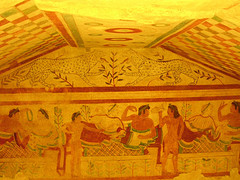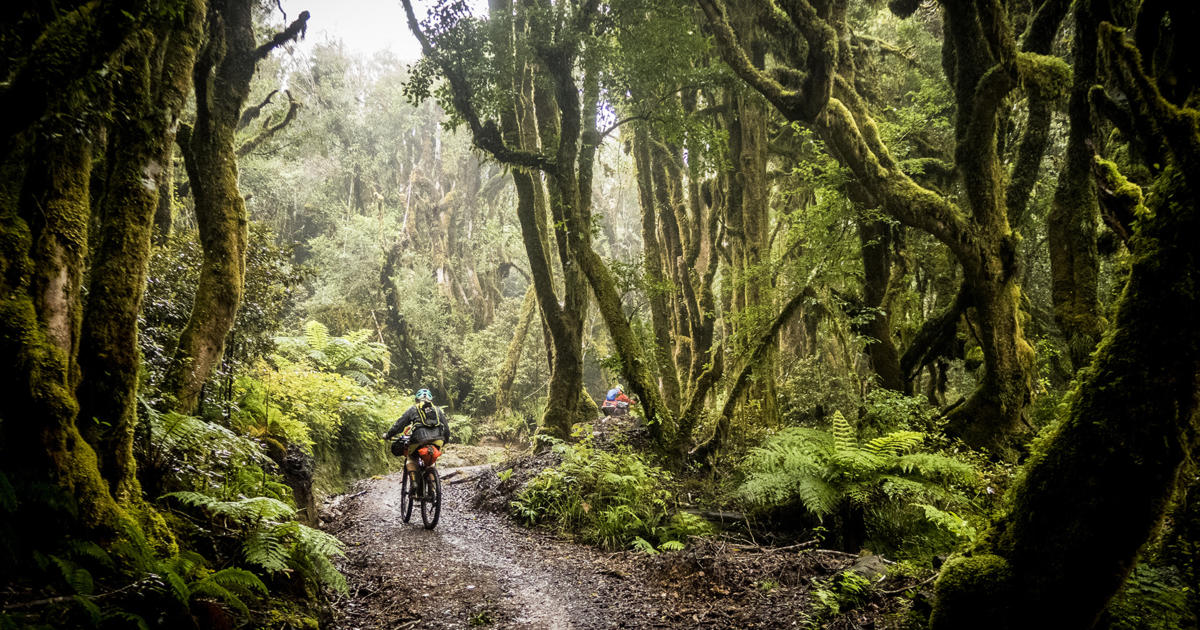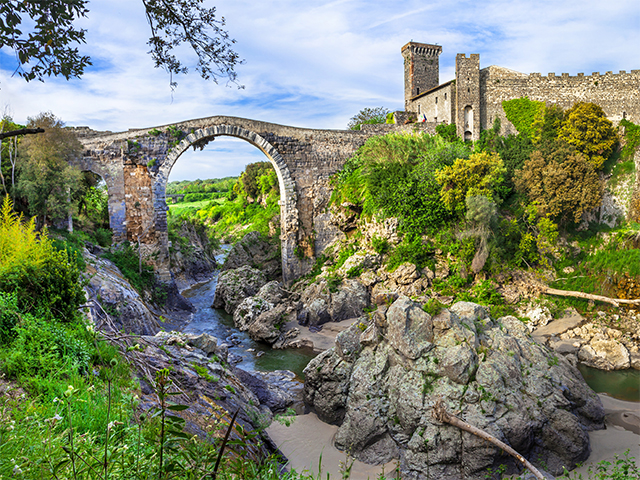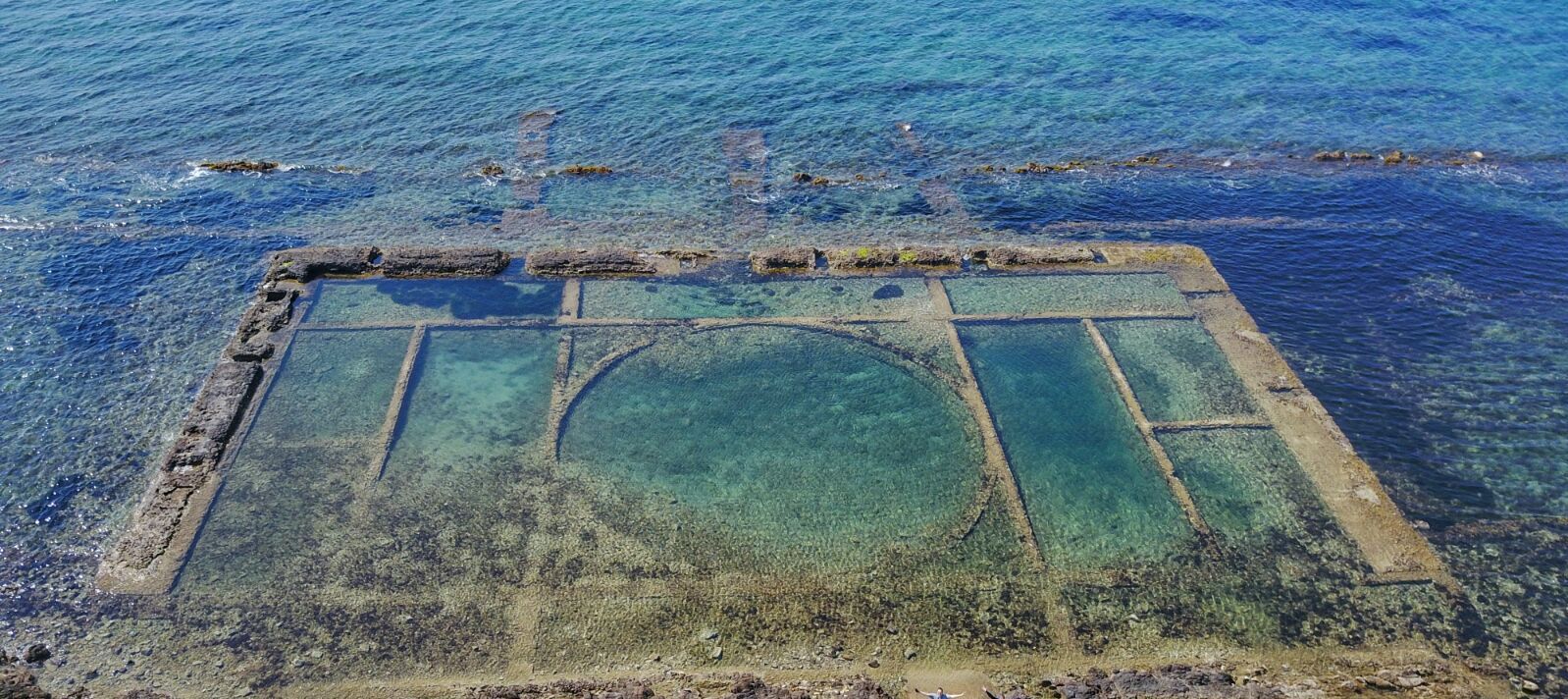"Here laughs the Etruscan, one day, as he lay, with eyes to the ground watching the sea..." (V.Cardarelli).
In the Tuscia region - the old name for the present administrative reality established by the northern province of Rome and in the one of Viterbo - "the Etruscan mystery", even if stirring in the atmosphere of abandoned cities and vast and silent necropli its true identity is revealed more so than in other Etruscan areas. Long before the Etruscans became a part of history with the acquisition of writings, they were present in the numerous protovillanovian and villanovian necropoli (X-VIII cent. B.C.) where the bronze crested helmet and bowl that guarded the ashes already forecasted this first Italic civilization.  It was then that other great cities (Caere, Pyrgi, Vejo,Tarquinia, Vulci, Velzna, Falerii), projected a new economic dimension, released different activities and new social turmoils; surrounded by the thousand by other centres strongly castled on tufaceous bastions, multiplied and used land wisely and rationally.
It was then that other great cities (Caere, Pyrgi, Vejo,Tarquinia, Vulci, Velzna, Falerii), projected a new economic dimension, released different activities and new social turmoils; surrounded by the thousand by other centres strongly castled on tufaceous bastions, multiplied and used land wisely and rationally.
In harmony with the cities of the living the cities of the dead descended into the bowels of mother earth to secure their roots, to guard and to hand down through time a smile full of hope for the Etruscans (VIII-I cent. B.C.) And the tomb became their immortal home using rock again as they did for their terrestrial home where they gathered a taste for beauty in jewels, ceramics, bronzes and furnishings. The face and the name and the family name of the man and the woman were handed down in the sarcophaguses where paintings encaptured the colour of the countryside and the sensual joy of life. Here in the Tuscia region, more than anywhere else, when well-known destiny decided on their decline, the Etruscan entrusted his breath of immortality in the rocky monumental necropoli by giving his rock friend and suggestive picture of the Fake Door the distressing mystery of life and death(IV-I cent. B.C.)
Long bands unfold along the tufaceous slopes, in places that are still protected by an eternal mystery, where the bright green vegetation contrasts and enhances the dark red tuff. And on this very same portion of happy Etruscan land there are temples, chapels, aediculas, votive deposits belonging to a population considered the most religious in antiquity. Where incense no longer burns but in the splendid sun, where the haruspex no longer reads the internal organs except within the breeze, where sacrifices are no more except that of an entire people. And on the shores of the blue seas, where they gave its name, ports emerge from the waters and the earth where commerce brought culture and technology, taste and art. This is the Tuscia, a land to discover in the name of culture, the first and greatest popoulation in Italy, aware in millenial paths, to warn the knowledge of life in deserted homes and the numerous necropoli, and in all areas that a deep human experience has made sacred.
Cerveteri is celebrated for its particularly splendid tomb architecture, as evinced in its famous necropolis. A life-size tomb will be rebuilt in the exhibition hall to illustrate the pomp and ceremony of the Archaic era, in which the cult of one's ancestors played a hugely important role.
Vulci will be represented by monumental sculpture in local stone, and by works from the neighboring site of Ischia di Castro which was placed at tomb entrances and which often depicted mythological beasts. From the closing years of the VIIIth century B.C. on, Caere (Cerveteri) and Vulci were the focal points of the flourishing trade routes from the Greek world, and it was through these markets that precious decorated ceramic vases from Corinth, from the Greek Orient, and later from Attica reached the various locations in Etruria. Several large vases will be on display, all of them veritable masterpieces of the Greek painting that had such a profound influence on Etruscan figurative art.
Tarquinia, with over 100 frescoed tombs ranging in date from the Archaic period to the Hellenistic era, was the single most important "art gallery" in the ancient world before Pompeii. A number of the most significant finds from this extraordinary treasure trove of painting, much of which is little known to the general public, will be on show at the exhibition. The discovery of the sacred area of Gravisca, the port of Tarquinia, in the early seventies proved crucial in affording us a better understanding of the economic dynamics that molded trade relations in the Tyrrhenian area. In fact, the very first emporium on Etruscan soil frequented in particular by Greek merchants was excavated at the site. The exhibition will tell the story of the sanctuary in Gravisca not only through the display of many of the ex-voto offerings left by worshippers at the site, but also through a life-size reconstruction of the temple of Adonis, where the celebrations marking the annual cycle of the young god's death and rebirth were held.






